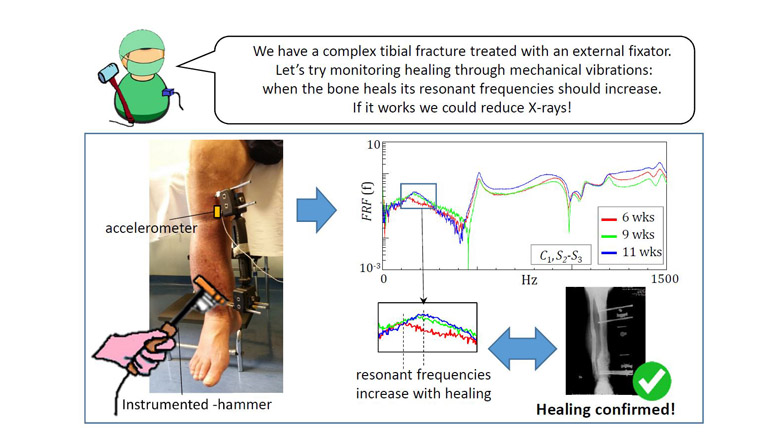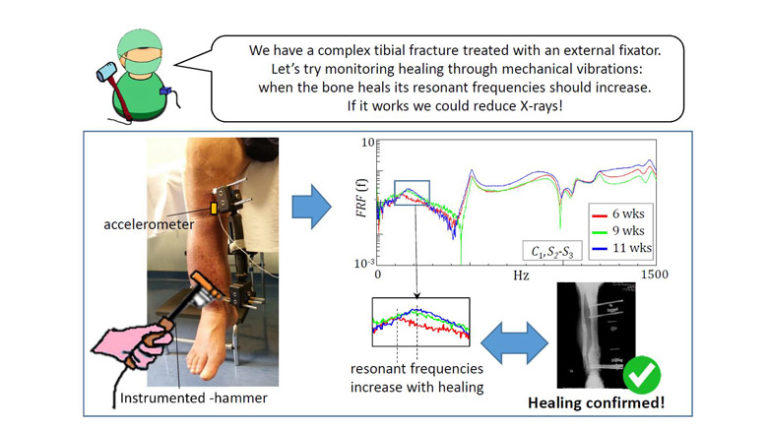
Abstract:
The correct evaluation of the healing process is important to define proper times of fixator dynamization and removal, avoiding refractures. Unfortunately, a quantitative healing assessment is not yet available in clinical practice. The aim of the paper is to prove the feasibility of the mechanical vibration method to assess bone healing in fractures treated with external fixation, in in vivo conditions. The case study was a patient with a tibial fracture treated with a monoaxial fixator. The healing process was monitored for three months through a series of five impact tests. The pins screwed into the bone were used both to excite and measure vibrations. Fracture healing was quantitatively assessed by estimating the resonant frequencies of the leg. The first frequency increased of about 4% per week during the observation period. After the hard callus formation (13 week), also other frequencies increased within the range 1%–6% per week. X-ray observations confirmed the healing progress and proved the method potentiality. In addition, the vibratory response of the leg after fixator removal was evaluated and resulted characterized by five modes in the bandwidth 0–1000 Hz. The results suggest that the vibratory response of a fractured bone treated with external fixation can be a promising indicator for quantitative healing monitoring. The mechanical vibration method could be helpful for reducing X-ray exposure of patients and could be performed more frequently, as desirable for obtaining more attentive monitoring.

